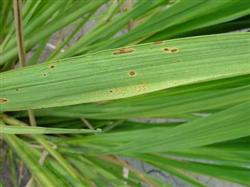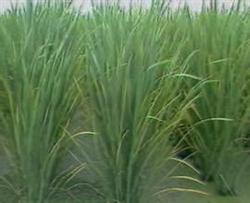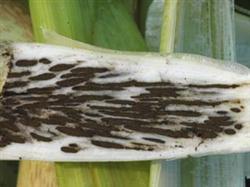Leaf spot of Zizania latifolia and flax

Flax leaf spot is the main disease of Zizania caduciflora, which is widely distributed and common, and occurs in all areas where Zizania caduciflora is planted. The disease is more serious in summer and autumn, and the diseased plant often reaches 80%, 100%, which obviously affects the production of Zizania caduciflora. [symptoms] the disease is mainly harmful leaves, the spot is brown necrotic spot at the beginning, and then develops into a small necrotic spot nearly oval to fusiform yellow brown, which is slightly lighter than the central color of the old spot, and there is often a yellow halo around it. When the humidity is high, the surface of the disease spot produces dark gray to black mildew, that is, the pathogen conidium peduncle and conidia. When the disease is serious, the disease spot is densely covered and connected to each other into irregular spots, resulting in the death of the diseased leaves. [incidence regularity] the pathogen overwintered on the old plant or diseased body with mycelium and conidia. When the conditions were suitable, the conidia were produced for primary infection, and after the disease occurred, the conidia were re-infected by airflow or Rain Water sputtering to spread the disease. High temperature and humidity are suitable for the disease. The growth temperature of the pathogen is 5mur35 ℃, and the optimum temperature is 28 ℃. The suitable temperature for conidia germination is 28 ℃, which requires high humidity, and saturated humidity is more favorable for germination in water droplets or water film. The bacteria have strong resistance to stress and can survive for several years under dry conditions. Usually in the growing period of Zizania caduciflora, high temperature and rainy, or muggy and humid, the disease is more serious, in addition, long-term continuous cropping, lack of potassium and zinc in the field, poor plant growth. It is beneficial to the disease. [control methods] 1. Combined with cutting stubble before winter, thoroughly clean up the diseased and residual old leaves, concentrate on crushing retting fertilizer, and reduce the source of bacteria in the field. 2. Strengthen the management of water and fertilizer, apply wax fertilizer in winter and seedling fertilizer in spring. In the disease-prone areas, attention should be paid to the application of phosphorus, potassium and zinc fertilizer, timely and appropriate drainage and sun drying, so as to promote root growth and enhance plant disease resistance. 3. Drug control was carried out in the early stage of the disease. You can choose 500x liquid of 50% dimethrin wettable powder, or 5000 times of 40% Fuxing EC, or 400x liquid of 40% Xidaojing wettable powder, or 200x liquid of 70% methyl thiophanate wettable powder, or 1500ltel 2000 times of 30% raw EC spray, 1500-1800 kg / ha, once every 15 days and 24 times depending on the disease.
- Prev

Key points of autumn planting techniques of Zizania caduciflora
The autumn planting of Zizania caduciflora can make full use of the free middle (single) late field, double late field, medium and low yield field, low-lying waterlogged land, Zizania caduciflora field, etc., which can improve the yield and benefit of the first harvest year. Compared with the traditional spring planting of Zizania latifolia, planting Zizania latifolia in autumn makes full use of not only the free fields in winter, but also the long time in autumn.
- Next

Occurrence and integrated control of powdery mildew of Zizania caduciflora
Powdery mildew of Zizania caduciflora is the main disease of Zizania caduciflora, which mainly harms leaf sheath and flesh, resulting in the decline of yield and quality of Zizania caduciflora. The main symptoms and comprehensive control methods of the disease are briefly introduced as follows: first, the main symptoms: leaf sheath infection in the initial stage, the spot is a dark green dot, and then developed into an oval tumor-like process, late leaf.
Related
- Where is it suitable to grow horseradish in China? it is expected to see the middle altitude horseradish in Alishan.
- How to prevent tomato virus disease reasonably? (Control methods included)
- Many people like to plant towel gourd on the balcony. What are the main points of this method and management?
- What crops can chili peppers be mixed with?
- Fertilization techniques and matters needing attention in Tomato
- What are the grafting techniques for peach seedlings in spring?
- Harm and control methods of root swelling disease of Chinese cabbage
- What are the pests of sweet potatoes? How to prevent and cure it?
- Symptoms, causes and Control methods of navel Rot in Tomato
- The cause of "Cucumber rotten bibcock" in Farmers' planting Cucumber and its Control Plan

